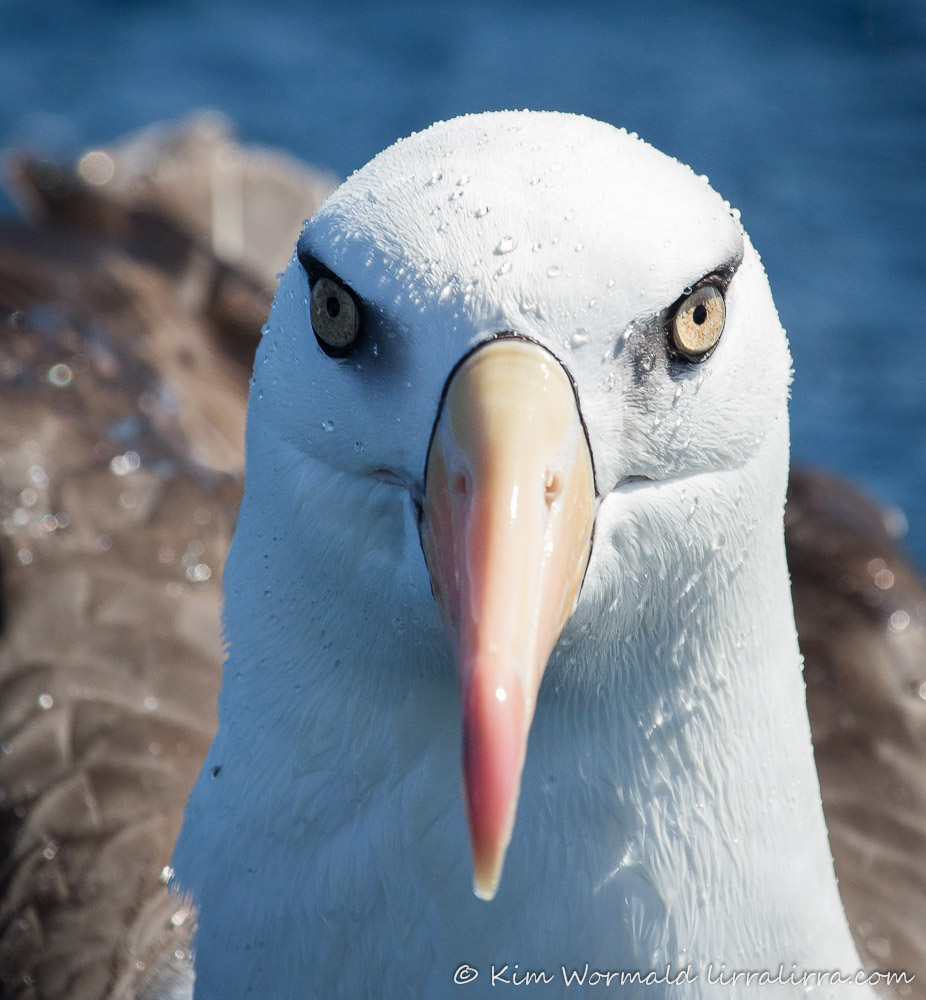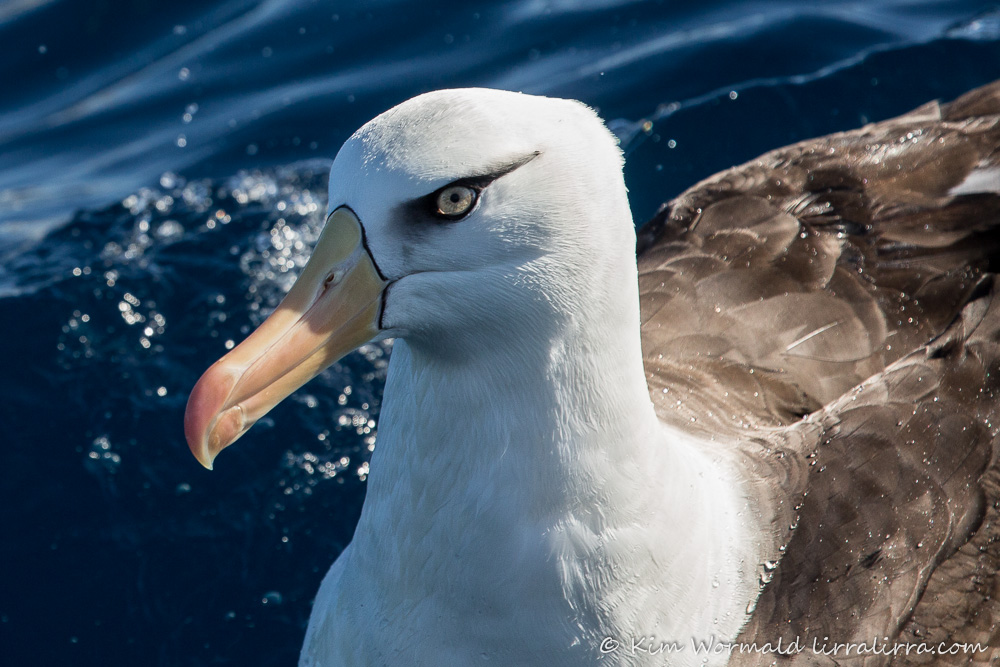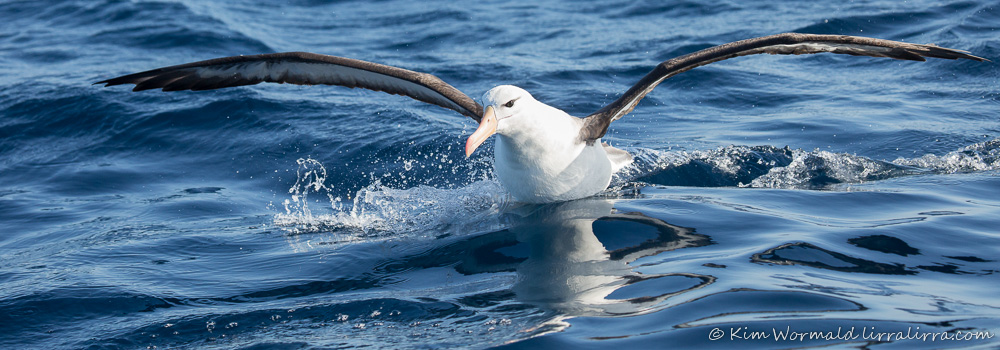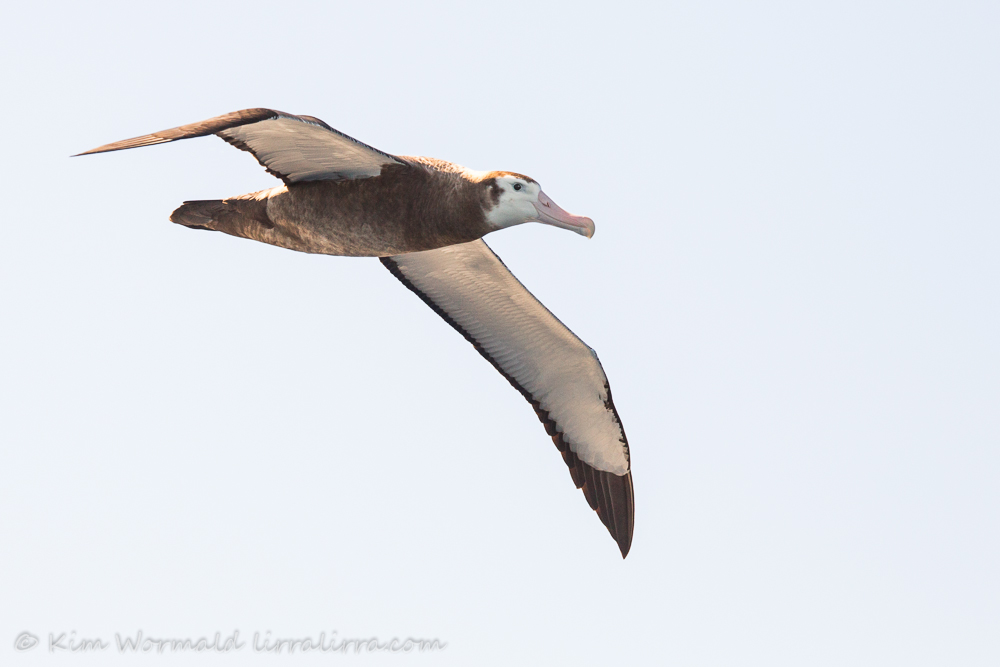Following on from the dreaded pelagic trip this week’s post includes some of the promised albatross images. I can only look at these albatross in fairly brief bursts as they remind me of a queasiness I’d rather forget; I hope they don’t have the same effect on anyone else!

Campbell Albatross
Canon 5D Mark III, 1/2000, f/8, ISO 800, focal length 400mm
Campbell Albatross are easy to identify with their heavy black brows and honey-coloured eyes. They have a wingspan of up to 2.5 metres and weigh more than 3 kilograms, that’s a lot of bird to keep airborne. For many decades their numbers have decreased due to large numbers drowning in longline fishing equipment; they are listed as vulnerable in South Australia and Victoria, and as Vulnerable on the IUCN (International Union for Conservation of Nature) Red List. They breed on Campbell Island which is an uninhabited, subantarctic island of New Zealand, and visit Australian waters as non-breeding birds.
.
Campbell Albatross
Canon 5D Mark III, 100-400mm L IS USM, 1/2000, f/8, ISO 800, focal length 310mm
The Campbell Albatross is a dramatic looking bird, I’m glad I was able to see the species before collapsing in a heap.

Black-browed Albatross
Canon 5D Mark III, 1/1600, f/7.1, ISO 800, focal length 180mm
The Black-browed Albatross is more commonly seen in Australian waters. It has a wingspan of up to 2.5 metres and weighs a massive 3-5 kilograms. The bird above has an intensely determined look as it races towards some fish.
This species is also impacted by longline fishing equipment. It is listed as vulnerable and endangered in New South Wales and Tasmania respectively and as Near Threatened on the IUCN Red List.
 Wandering Albatross – immature
Wandering Albatross – immature
Canon 5D Mark III, 100-400mm L IS USM, 1/2000, f/8, ISO 800, focal length 400mm
Catching a glimpse of this immature Wandering Albatross was a highlight of the trip. This magnificent species has the widest wingspan of any pelagic bird spanning an impressive 2.5-3.5 metres. Wandering Albatross only land to breed and feed and according to Birds in Backyards one banded bird was recorded as travelling 6000km in twelve days. They begin breeding at about nine years of age and mate for life.
They are listed as Endangered, Vulnerable and Threatened around Australia and as Vulnerable on the IUCN Red List. Again the biggest issue for this species is longline fishing entanglement but, like other albatross species, they also ingest plastics and hooks and suffer from an accumulation of chemical contaminants and by colliding with cables used on fishing boats.
I was delighted to see so many albatross species and hadn’t expected to feel upset when compiling this post but my research, especially on the Department of the Environment website, has made me more aware of the plight of these magnificent birds. Threat abatement plans have been implemented that aim to reduce the numbers of seabirds impacted by longline fishing – I hope these measures are hugely successful and our large sea-going birds can recover their numbers.
To see images of Shy Albatross and for information on the pelagic trip you might like to visit a previous post: Pelagic pain and pleasure.
Happy birding, Kim
NB It is possible to receive a weekly email informing you that lirralirra has been updated – just add your address to the ‘Subscribe to email’ box above right.
Also, I have added a Facebook like button – thank you ‘likers’, clicking the button is much appreciated.

Such amazing beady eyes! So magnetic!
Very beady! Now you’ve visited lirralirra from Australia, Iceland and Oman and all kinds of places in between, you’re definitely an intrepid traveller!
Amazing pictures once again Kim. As others have said long-line fishing is disgraceful but as in many areas money and jobs takes precedence over any other issues.
Margot, I’ve been thinking about this a lot since looking into the eyes of those magnificent birds. How different the world would be if there was an ‘eat kindly’ culture.
Wow, amazing closeups. I would love to see an Albatross. The juvie flight shot is awesome.. Great photos, Kim! Have a happy weekend!
Thanks Eileen, I feel very lucky to have been eye to eye with albatross. I hope you get to see some soon!
Fantastic image quality in these albatross photos, Kim. And what wonderful birds they are – all the more depressing to know how we are treating them; the rubbish in the ocean and, in particular, long-line fishing. Just too awful. Hopefully, those measures you mentioned will help them. On a happier note the immature Wandering Albatross looks like he is smiling at you.
I was so lucky to see the Wandering Albatross, Rick. It appeared so briefly and I somehow managed to get that shot despite being crook, it does look as though it’s smiling, what a lovely thought!
Long-line fishing is an obscenity. There are far too many death associated with it, and all too often deaths of things, like the albatross, that we need to protect.
Loved the moody elegance of the Campbell Albatross – not one I had ever heard of.
Thank you.
It is an obscenity EC, I was sickened by the numbers of birds killed as the ‘by-catch’.
Hi, Di Oliver put me onto this web site. Since I emigrated from Scotland I have been fascinated by all Australian Wildlife but particular BIRDS. I look forward to checking out more of your postings.
Happy bird watching this Anzac Day.
Cheers Marie Phillips
Welcome Marie – I know just how you feel about aussie wildlife and birds! Please say hi to Di for me and I hope you enjoy your visits to lirralirra, Kim